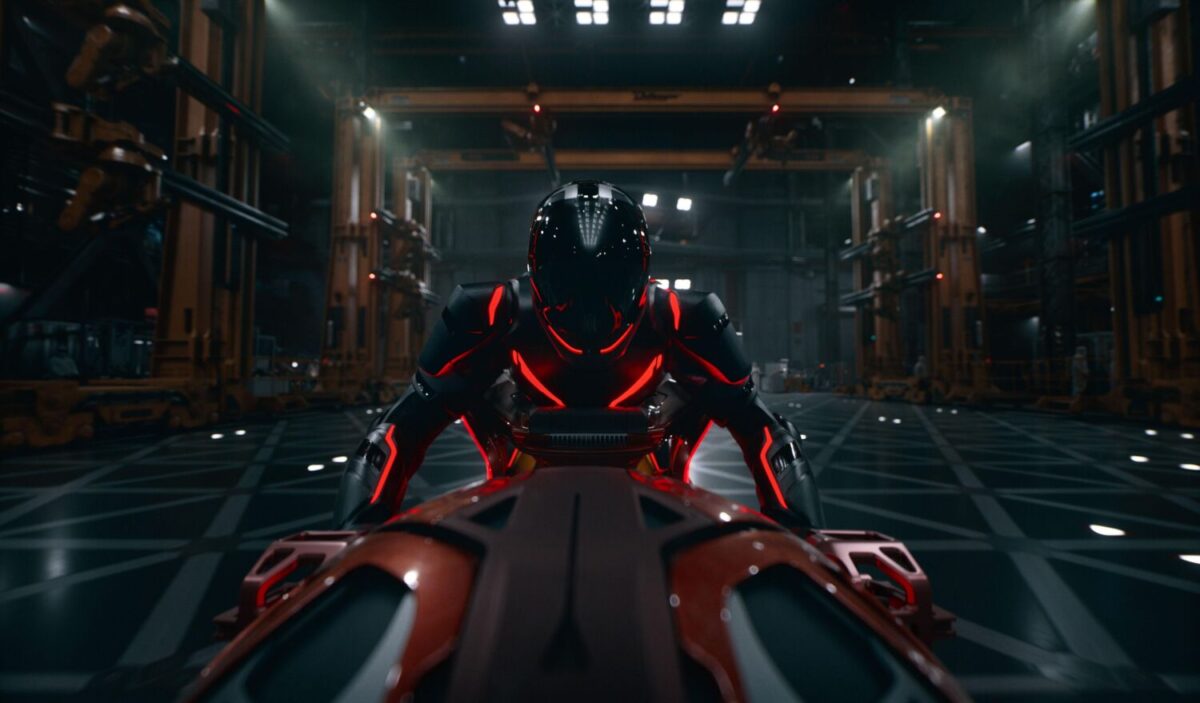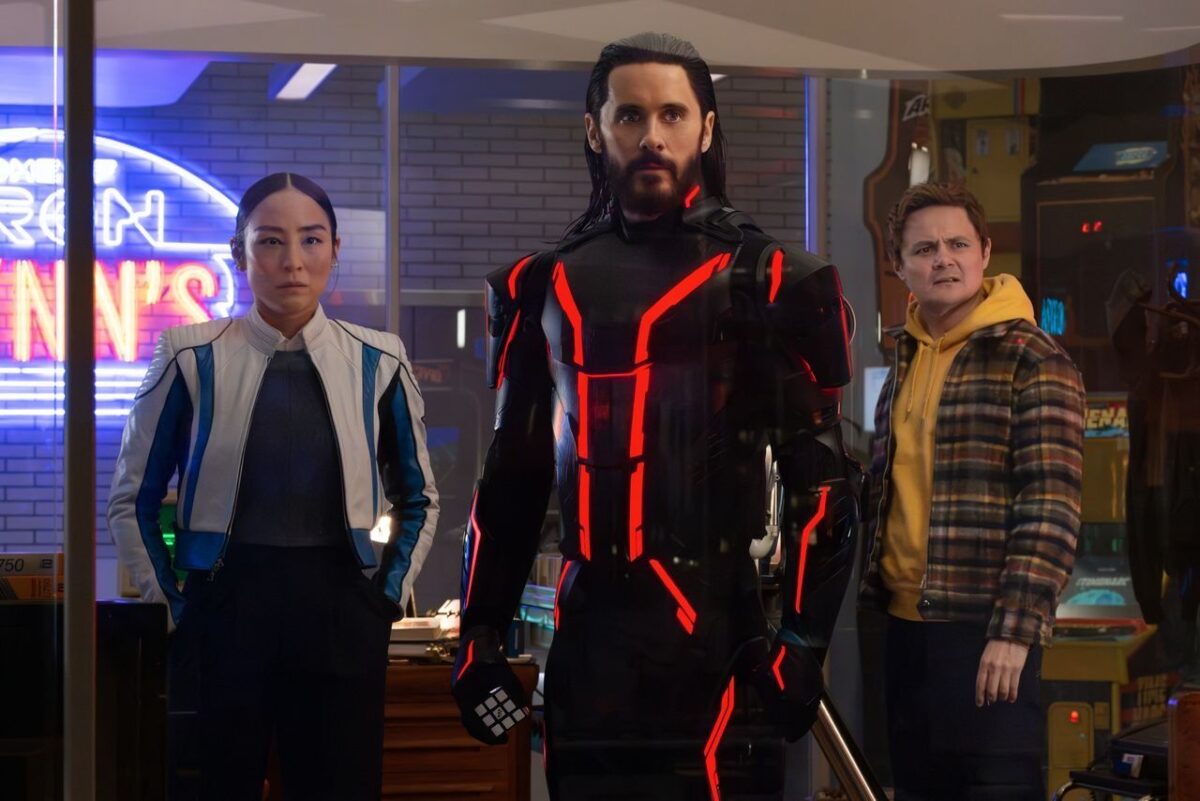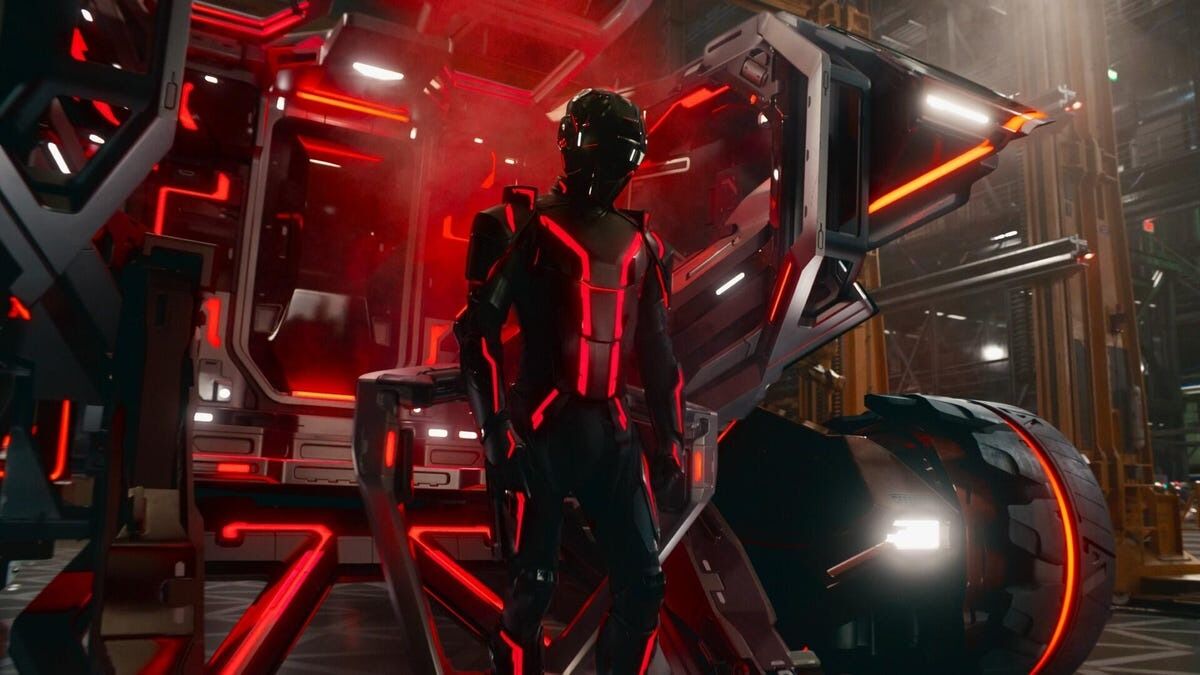At some point, digital natives have toyed with the idea of physically being part of the digital realm, whether it’s being constantly plugged in or being in a space without physical restrictions. While the concept isn’t anything new today, with films like The Matrix (1999), Ready Player One (2018) and Free Guy (2021) exploring the concept with greater details, it was a literal game-changer (hah!) when the idea was first introduced on the big screen with 1982’s Tron, as the advent of home computers fueled the imaginations of audiences, creating a cult classic in the process.

As one of the earliest examples of how films could use “cutting-edge” CGI technologies (for its time) to build entire digital worlds, it’s no surprise that the original film left a lasting impact on the industry. Over 20 years later, the aptly named Tron: Legacy would continue in the same vein, following the legacy left by missing Encom CEO Kevin Flynn (Jeff Bridges) and amplifying its sci-fi visuals with the advancements in technology.
In 2016, Disney expanded on the franchise by adding the Tron Lightcycle Power Run ride in Disneyland Shanghai, before introducing it to Walt Disney World in 2023, which were clear signs that the House of Mouse wasn’t planning on logging out of that world anytime soon.
After some missteps with a follow-up, the franchise is receiving its third entry with Tron: Ares, and with today’s CGI enhancements being less substantial compared to the gap between the first and second film, it begs the question – how can the franchise continue to surprise audiences?

The answer is to completely flip the script of previous instalments, where instead of man entering the digital world, The Grid is coming to us instead. In a move that completely nixes the ending of Tron: Legacy, the film once again pits Encom and Dillinger Systems against each other, with the former now headed by series newcomer Eve Kim (Greta Lee, Past Lives) and the latter by the ambitious Julian Dillinger (Evan Peters, X-Men: Apocalypse), grandson of Flynn’s co-worker turned nemesis, Ed Dillinger (David Warner). To gain an edge over his competitor, Julian develops the technology to use 3D printing to bring programs from The Grid into the real world, in the hopes of selling super soldiers with advanced digital technology to the highest bidder.
And while this is certainly an intriguing prospect, the film ultimately shows that the real world is simply not as interesting as its digital counterpart.
The problem is these printed programs don’t last forever – just a mere 29 minutes before they all disintegrate – a revelation Julian conveniently leaves out of his sales pitches. In order to find a solution to “permanence”, Julian sends his ultimate digital weapon, Ares (Jared Leto, Dallas Buyers Club), the new Dillinger Grid Master Control (a highly advanced security software) on a mission to secure something known as a “permanence code” from Encom, specifically from Kim, who somehow conveniently manages to locate it. Coincidence, meet digital synchronicity.

What follows are the typical Tron set pieces, like light cycle races, and a whole bunch of shots where characters are running away from digital war machines brought into the real world. The main issue here is that while the movie brings The Grid to the real world, it can’t bring the digital world’s rules along with it, specifically, how derezzing works.
In The Grid, programmes are instantly disintegrated upon contact with light beams emitted from light cycles or Identity Discs. These same rules don’t apply to the real world, meaning light beams go from deadly death-traps to mild traffic inconveniences, since they function as nothing more than physical barriers made out of light. This makes programs much less of a threat, with the action sequences occurring in the real world being a noticeable step down in excitement compared to battles within The Grid.

Norwegian director Joachim Rønning (Pirates of the Caribbean: Dead Men Tell No Tales, Maleficent: Mistress of Evil) does his best with the source material created over 40 years ago before computer programs were understood, and rewrites some of the lore and for someone who over-complicated the fifth Pirates film, his love for the concept of Tron, and appreciation for the 80s era shines through here, including a reference that fans just can’t get enough of. There is some ambiguity at the start, but pretty soon, it becomes easy to establish what the film is trying to attempt – establish the players, reset the board, or rather, grid, and move forward, including with some links and references to the earlier films. But this isn’t Star Wars or Star Trek, where fans debate what’s canon or not.
What he has done is take the spark of Tron’s virtual world and brought it into ours, and there are still some enjoyable moments to be had when programs clash in the digital world, with even an entire motorcycle meets lightcycle highway chase sequence in a nod to the original Tron. Sadly, these moments are few and far between and with the choice to focus on real-world shenanigans, the action in Tron: Ares feels lacklustre compared to its predecessor, and even the film’s climactic scene is a complete letdown, with the much-advertised Recognizer seen in the trailers not actually doing much damage to the city at all.

Boring action aside, the film can’t rely on its narrative either, as its overarching plot surrounding Ares’ desire to feel and become a real boy falls flat since audiences are never given a reason to actually care about the character. Yes, Ares is supposed to be a robotic super soldier that isn’t familiar with the idea of emotion, but the same can be said about Legacy’s Quorra (Olivia Wilde, House), and even then, she at least had a humorous curiosity and charm to her that resonated with audiences, something that Ares lacks.
The other thing that’s lacking from the film’s narrative is any sort of chemistry between the two leads, Ares and Kim. CGI action and thought-provoking themes of human identity aside, Tron films have always been a tale of unlikely romance, which is an element completely missing here. It’s an awkward “will they / won’t they” story that ultimately leads to nowhere, and most of the pair’s interactions just make it seem that they are helping each other for personal benefit instead of having any sort of emotional attachment.

In the end, the only thing about Tron: Ares that might truly surprise fans is how hard Disney is trying to give reasons as to why this movie exists in the first place, including a post-credits reveal that ties back to the original. It takes the best parts of the Tron franchise – intense CGI Grid battles and a leading pair to root for – and throws them in the backseat in favour of shaking things up by focusing on the real – and arguably more boring – world. The film does have its saving graces, such as a couple of memorable scenes set within The Grid, but for the most part, the memory of this sequel is an extended fan service that doesn’t fully justify its existence.
GEEK REVIEW SCORE
Summary
Tron: Ares attempts to shake up the sci-fi formula by bringing The Grid to the human world, while also trying to revive a franchise that, while recognisable, has never resonated with a wider audience. And this sequel, while entertaining, won’t change things either.
Overall
6.3/10-
Story - 5.5/10
5.5/10
-
Direction - 6.5/10
6.5/10
-
Characterisation - 6/10
6/10
-
Geek Satisfaction - 7/10
7/10













